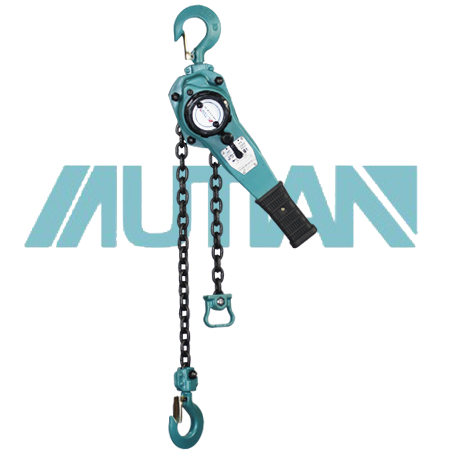 中文版
中文版



Welcome to contact us by phone:0086-0312-7969888
Working with lever chain hoists involves potential risks and hazards that need to be carefully managed to ensure a safe working environment. Some common risks associated with lever chain hoist work include:
Overloading: Exceeding the rated load capacity of the lever chain hoist is a significant risk. It can lead to equipment failure, causing accidents, injuries, or damage to the load being lifted.
Poor Maintenance: Neglecting regular maintenance, such as lubrication and inspections, can result in wear and tear of the hoist components. A poorly maintained lever chain hoist is more likely to malfunction, increasing the risk of accidents.
Incorrect Rigging: Using improper rigging techniques or equipment can compromise the stability of the load and the safety of the lifting operation. It's crucial to follow proper rigging procedures and use appropriate attachments.
Frayed or Damaged Chains: A damaged or worn chain poses a significant risk. Inspecting the chain for any signs of wear, damage, or corrosion before each use is essential to ensure its integrity.
Unstable Loads: Lifting unbalanced or unstable loads can lead to load shifting during hoisting, causing accidents. Proper load positioning and secure attachment are critical for stability.
Mechanical Failures: Hoist components, such as the lever, ratchet and pawl mechanism, or load chain, may experience mechanical failures due to wear or damage, resulting in unexpected incidents.
Inadequate Training: Insufficient training on the operation and safety procedures of lever chain hoists can lead to mistakes and accidents. Operators should be trained on the correct usage, inspection, and safety protocols.
Environmental Factors: Adverse environmental conditions, such as extreme temperatures, high humidity, or exposure to corrosive substances, can affect the performance and safety of the hoist.
Inadequate Personal Protective Equipment (PPE): Operators should wear appropriate PPE, including gloves and safety glasses, to protect against potential hazards during lifting operations.
Failure to Follow Manufacturer's Instructions: Disregarding the manufacturer's guidelines and instructions for the specific lever chain hoist being used can result in unsafe practices and increased risks.
To mitigate these risks, it's crucial to conduct thorough pre-use inspections, provide comprehensive training for operators, follow proper rigging and lifting procedures, and adhere to the manufacturer's guidelines. Regular maintenance and immediate addressing of any observed issues are key to ensuring the safe and efficient operation of lever chain hoists. Additionally, creating and maintaining a safety culture within the workplace promotes awareness and compliance with safety protocols.
X